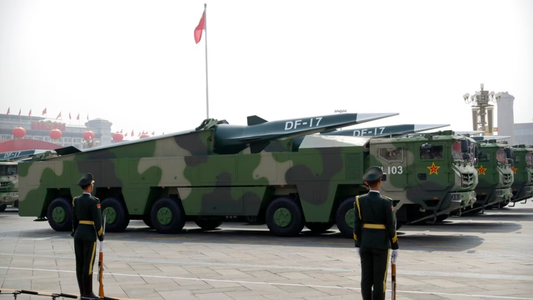It has become universally acknowledged that existing air defense systems are incapable of intercepting hypersonic missiles, a reality highlighted by Russia’s deployment of these weapons in the Ukraine conflict. The question arises: what if the range of these missiles could reach any point on Earth?
The South China Morning Post (SCMP) reported that a team of researchers has developed a new cooling system that extends the flight time of these missiles by approximately two and a half hours, enabling them to traverse the globe. Theoretically, this advancement would grant China the capability to target any location on Earth with these missiles.
The extreme speed of these missiles generates immense heat due to friction as they pierce through the atmosphere. This heat intensifies dramatically as the missile nears the Earth’s surface. Consequently, such missiles necessitate highly efficient thermal protection systems and innovative cooling mechanisms to ensure prolonged operational capabilities.
The US and Hypersonic Weapons
The United States has been struggling to develop its own hypersonic weapons, having yet to overcome the thermal challenges associated with these technologies. Simultaneously, the US is collaborating with Japan to construct an anti-hypersonic missile defense system. Additionally, the US has recently launched satellites designed to detect and track hypersonic missiles, as existing satellites are inadequate for this task.
In June 2024, the US Congress formally recognized hypersonic missiles as the most significant threat to air defense systems due to their maneuverability, which complicates prediction and interception efforts.
The Global Hypersonic Race
China and Russia are at the forefront of hypersonic missile development. North Korea and Iran have also claimed to possess such weapons, while Yemen recently announced the successful test of a domestically developed hypersonic missile. Numerous other countries, including the United States, Australia, France, India, and Japan, are actively pursuing research and development programs in this domain. At any given moment, these nations could transition their research into operational capabilities.
The research team behind the new cooling system has published its findings, detailing the device’s operation and the results of its tests, in the Journal of the National University of Defense Technology.
